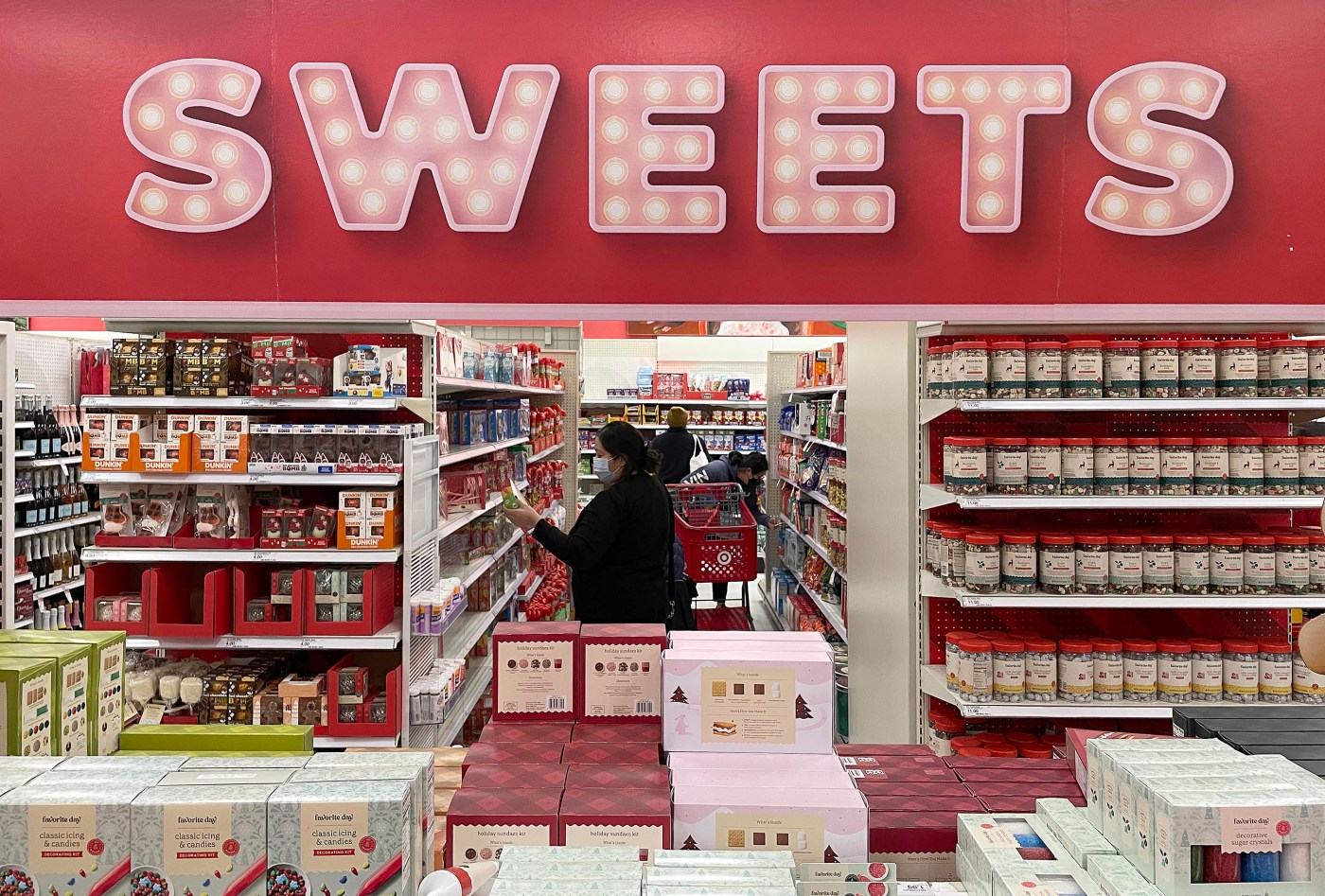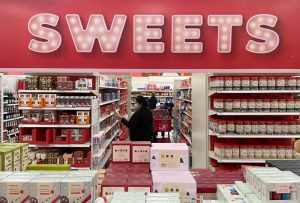
America’s sugar shortfall leaves candy-makers scrounging
Bonbons and candy canes may dominate the American holiday aesthetic, but U.S. confectionery companies are feeling anything but jolly as they head into one of the sugar market’s tightest years in recent memory.
Prolonged droughts in major cane-producers Mexico and Louisiana have helped push U.S. sugar futures to the highest ever for this time of year and forced users to turn to high-cost imports instead. Sweets-makers paying up to snag supplies are choosing to protect their margins by raising prices for consumers — and hoping shoppers don’t balk at the mark-up.
“We just found that it was better to just pay more for sugar and pass it along to the consumer than to be completely out of sugar,” said Kirk Vashaw, chief executive officer of Dum Dums lollipop maker Spangler Candy Co. “And there’s a lot of other companies that I think thought the same thing.”
Candy is big business in the U.S.: Confectionery retail sales are forecast to be $48.8 billion this year, according to consumer research group Euromonitor International. With about 1,600 manufacturing sites across all 50 states, the U.S. sector employs more than 200,000 people, the National Confectioners Association estimates — with more than double the number of indirect roles, like suppliers.
Rising food costs have been a problem ever since pandemic-era supply chain snags and labor shortages blindsided businesses in 2020. Even now, food prices for many everyday items remain at their highest levels ever — and sweets have been particularly hard hit. Consumer prices for confectionery items rose 13.4% in the 12-month period ending Nov. 25, according to data from consumer researcher NIQ, outpacing overall grocery gains.
Although inflation is a problem the world over, the U.S. sugar market has been uniquely impacted due to its protectionist regulations. U.S. rules cap both domestic sales and the volume of foreign supplies that can be brought in under low duties; all other sugar imports past those so-called tariff-rate quotas are subject to higher taxes. The regulations are intended to protect grower profits, especially given higher U.S. production costs, and prevent other countries from flooding the U.S. with sugar.
“Congress has to continually balance seeking trade opportunities outside of the U.S. while protecting U.S. producers from unfair practices used by other countries to prop up their own industries,” Rob Johansson, director of economics and policy analysis for the American Sugar Alliance, said in an email.
But critics say the rules aren’t nimble enough to keep pace with any domestic production shortfall. An October report from the U.S. Government Accountability Office found the program cost sugar users like consumers and food manufacturers more than it benefited producers, resulting in a net economic loss of as much as $1.6 billion a year. Johansson, whose group represents a coalition of sugarcane and sugar beet producers, said the GAO report “used biased and dated information.”
In normal years, imports from Mexico, which get preferential treatment, and those allowed under quota limits from other countries are generally enough to fulfill U.S. demand. But Mexican imports haven’t held up: In November, the U.S. imported the least sugar from Mexico for that month since at least fiscal 2011, USDA data show.
In fact, shortfalls have become so acute this season that buyers are increasingly turning to so-called high-tier tariff imports, or the ones taxed more for surpassing the quota limits. The U.S. Department of Agriculture forecasts that those priciest imports are approaching the record highs seen after hurricanes Katrina and Rita in 2005 destroyed much of Louisiana’s cane crop and took refineries offline.
The U.S. is currently at “a high moment of anxiety when it comes to our sugar supply,” said Grant Colvin, the executive director of the Alliance for Fair Sugar Policy, a coalition of sugar users who advocate for regulation reforms. “The program is designed to inflate the cost of sugar.”
The reauthorization of the Farm Bill in 2024 will give advocates a chance to lobby for a change in the way future import quotas are determined. But past efforts to overhaul the process have failed, and companies struggling to afford sugar aren’t just waiting for Washington.
Instead, candy-makers are taking matters into their own hands. In addition to raising prices, some companies are trying to lock in supply costs ahead of schedule. That’s what Bryan, Ohio-based Spangler Candy did: It booked its 2024 sugar contracts this past February, months earlier than usual. CEO Vashaw said the company is likely to do the same again for 2025, since concerns over shortages have kept prices elevated.
If the sugar problems continue much longer, more companies might look to offshore output. It has happened before. In 2019, Spangler moved production for Sweethearts, the popular heart-shaped Valentine’s Day candy, and Necco candy wafers from Boston to Mexico after the brands’ former owner went out of business. Half of Spangler’s candy cane production was already south of the border at the time. Better automation in the U.S. offsets the higher prices of sugar, so production costs for candy canes are similar in both countries, Vashaw said.
Atkinson Candy Co., the 91-year-old company behind Mary Jane peanut-butter caramels, already moved production of its “Mint Twist” Christmas candies to Guatemala in 2010. Third-generation candy-maker Eric Atkinson said he has considered moving more hard candy output away from Texas if conditions don’t improve, though he hasn’t made any concrete plans.
“One of the things that people read into that is that we are exporting jobs. And the fact of the matter is those jobs weren’t going to be there anyhow based on the price that we have to charge,” he said. “We’re maintaining a brand in the only way that we could.”
Despite the challenges, larger candy companies have continued to see revenue growth amid strong consumer demand, offsetting sugar costs, said Renata Medeiros, director of food and agriculture client coverage at ING. But for smaller companies with less negotiating power, the impact of expensive raw materials takes a toll. U.S. raw sugar futures eased off the contract’s record highs posted in November but are still close to double levels from a decade ago. Prices for physical refined sugar, especially purchased via the spot market, tend to be much higher than futures.
When manufacturers pass on the higher raw material costs to consumers, there’s always a chance retail sales drop. So far, unit sales in the confectionery category only dipped 0.5% over the past year, the NIQ data show, suggesting buyers are still willing to shell out for small luxuries like desserts, even at higher prices. But current levels are “close to the point where significant price increases probably aren’t going to work” and could have “serious consequences” on unit sales, said Paul Steed, a former commodity price risk manager at Mars Inc.
The sugar issues are also hitting other users, from pastry shops to cafes. Some commercial bakers are looking to secure multiple suppliers in order to reduce supply-chain risks, the American Bakers Association said in an email.
Over the course of last year, Brooklyn institution Junior’s raised its prices 12% to partially offset costs, but it hasn’t been enough, with margins slashed in half since the pandemic, said owner Alan Rosen. There are no alternatives to sugar, since that would compromise the quality of its 73-year-old cheesecake recipe.
“Our costs have approximately doubled over the last years. We can’t double our prices to our consumers. It’s just virtually impossible,” Rosen said. “Our cheesecakes are truly great, but I don’t know if they’re twice as great.”
___
©2023 Bloomberg News. Visit at bloomberg.com. Distributed by Tribune Content Agency, LLC.

